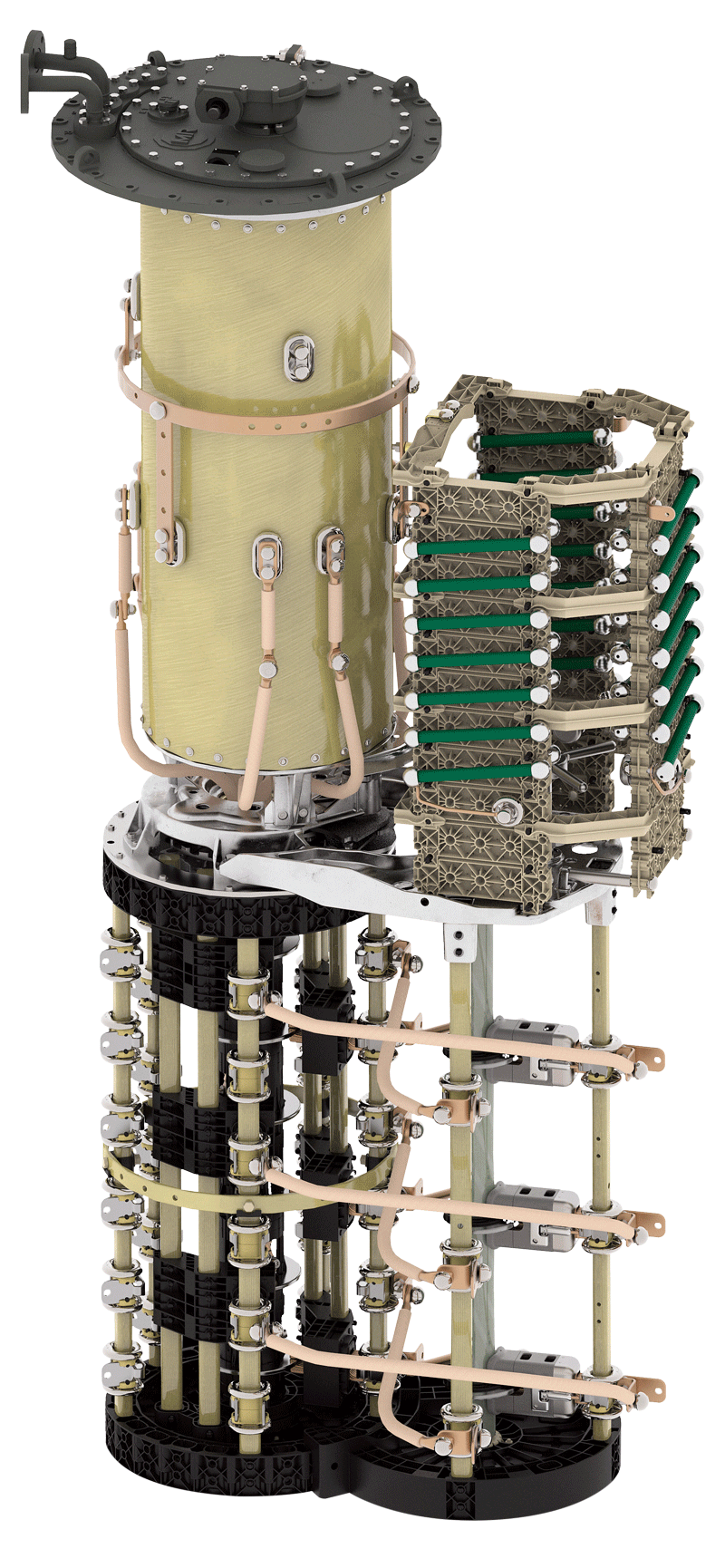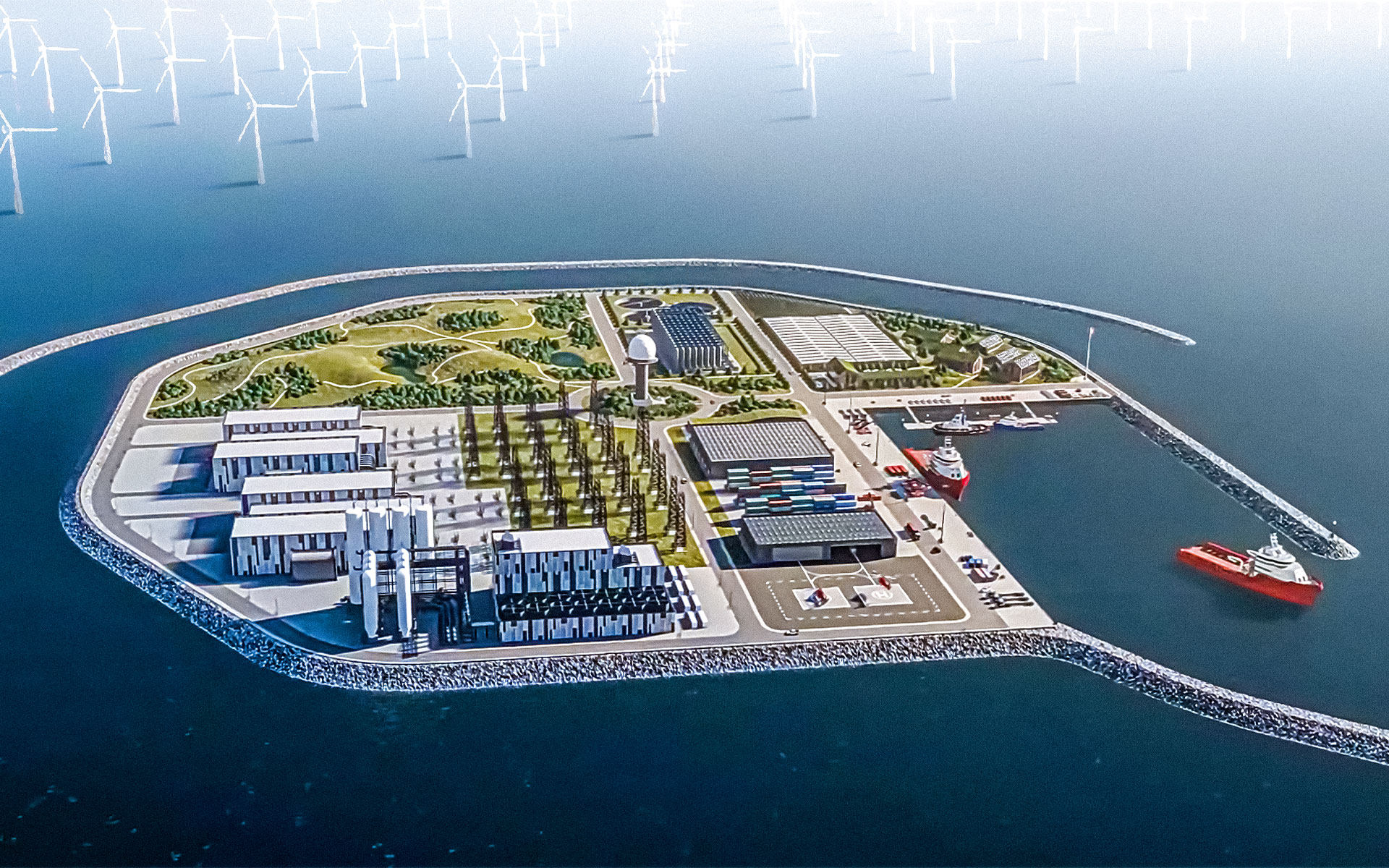What is the best way to collect the wind power in the North and Baltic Seas and distribute it to the neighboring states? The vision: with a network of artificial islands.

1 Princess Elisabeth Island
As it looks, this island will be the world’s first artificial energy island. The Belgian transmission system operator Elia wants to build it 45 kilometers off the coast of Belgium. Construction is scheduled to start as early as 2024. When the project is completed in 2030, 3.5 gigawatts of electricity will be produced in the region around the island on an area of around 285 square kilometers. This will flow via submarine cable to the Belgian mainland but also to the energy island off Thorsminde and to the United Kingdom. The island is designed in such a way that it can be expanded in a modular fashion at a later date.
2 Islands on the Dogger Bank
The Dogger Bank is a sandbank lying under the sea about 300 to 350 kilometers long and up to 120 kilometers wide, which was a land bridge between Great Britain and Denmark during the last ice age. It is only 13 meters deep in places and therefore ideally suited for offshore wind farms with a total capacity of 100 gigawatts. The turbines are expected to start operating from the early 2030s. One or more islands could be raised on the Dogger Bank and collect the electricity, which would then be routed to the UK, Norway and Belgium. So far, however, the plans exist only on paper.
3 Island off Thorsminde
Denmark is planning a twelve hectare energy island 80 kilometers off the North Sea coast of Thorsminde. It could supply three gigawatts of electricity after the first stage of expansion, later it is planned to supply ten gigawatts, which will then be provided by a total of seven surrounding wind farms with around 470 wind turbines. Electrolysis plants for hydrogen production are also planned. The clean wind power is intended for Denmark, Belgium and Germany. Originally, the island was to be connected to the grid from 2033, but plans are currently on hold until investors are found for the project.
4 Bornholm Energy Island
Although this project is not an artificial island, the vacation island of Bornholm in the Baltic Sea is also to serve as an energy hub with a converter, transformer station and a terminal for distributing the wind power produced by offshore turbines about 15 kilometers southwest of the coast starting around 2030. At least three gigawatts of capacity are expected to be installed. A cable will deliver the power across Zealand (Denmark) and on to Germany.
300
gigawatts
REINHAUSEN INSIDE
Reinhausen already offers products, solutions and services for maritime offshore applications that are also suitable for the energy islands.
An overview.
Voltage regulation
Voltage regulation at sea is even more challenging than it is on land. MR’s tap-changers and other equipment can be used to build a stable grid.
More info at:
www.reinhausen.com/OLTC

Intelligent operating equipment

Offshore equipment is subject to particularly high stresses. The ETOS® automation solution, combined with intelligent sensors, enables transformers to be monitored and controlled. This provides an accurate picture of the operating status at all times. In addition, the digitization solution helps with complex network management tasks, for example by temporarily overloading the transformer.
More info at:
www.reinhausen.com/automation
Clean grids
On the high seas, there is a lack of grid-stabilizing power plants. With GRIDCON® STATCOM systems, voltage-stabilizing and load-flow-optimizing measures can also be implemented at sea.
More info at:
www.reinhausen.com/pq

Testing technology for cables

A defect in a submarine cable would be fatal for the power supply on land. HIGHVOLT offers weatherproof offshore testing systems that are specially designed for use on the high seas to detect possible defects in the cable at an early stage.
More info at:
www.highvolt.com
Robust insulators
Salt spray and moisture are extremely damaging to insulators. The composite hollow insulators from Reinhausen Power Composites are ideally suited for use at sea because the shielding is made of silicone. This is hydrophobic, i.e. water-repellent, and prevents the deposition of salt.
More info at:
www.reinhausen.com/highvoltageinsulators

Solutions for electrolysis

Some wind power can be used directly at sea to electrolyze hydrogen. With vacuum on-load tap-changers from the VACUTAP® series in combination with MR’s power quality solutions, the performance as well as the lifetime of H2 plants can be increased. (siehe Artikel „H2 ready“).
Service on the high seas
Reinhausen has service personnel specially certified for offshore use who are quickly on site and implement repair measures so that the wind farm can be quickly reconnected to the grid.
More info at:
www.reinhausen.com/premium-service

Energy boom on the sea



